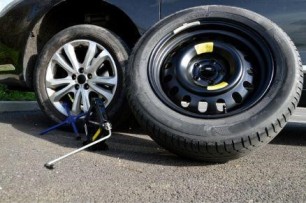General Insurance Blogs, Articles & Updates by - Magma HDI
Have us call you
- RENEW YOUR POLICY
- BUY NEW POLICY

Best hacks for home buyers to purchase their dream home at the best price
Purchasing a home is a long, chaotic and hectic process. In addition to the budget, multiple other things come into consideration when you plan to buy a house. With several financial and real estate scams happening around, it becomes challenging to be decisive about purchasing a house. Several apps, real estate agencies, and brokers claim to help you find your dream space.
But how would you know if you are being scammed under the name of getting the best deal worked out “especially for you” or if you are getting the best price for your house? Do not worry. This blog lists the best hacks for home buyers to make them aware of what they need to know beforehand and purchase their dream home at the best price.
1. Talk to your bank:
There is a certain urge to move into your dream place. But before you get the ball rolling on your shifting, make sure that you communicate with your bank about getting a pre-approved loan. The bank must be ready to grant you the loan at a certain set rate. In addition, getting pre-approved from the bank also acts as a symbol of trust and confirmation for the agents and house sellers on your house deal.
2. Dig a little deep:
When you are looking into properties that are available for sale, be it a new construction or an old one, always investigate thoroughly. You should seek information on the reasons why the property is on sale.
And if the agent or the seller is in a hurry to sell the house, more often than you might predict, it could be a potential red flag which should lead you to dig a little deeper and see if you are willing to purchase that particular house or property. Only make your offer after you have all the details.
3. Be smart about your offers:
While low-balling on the prices is practised in our culture, it might get risky if the market on your property or potential dream home is competitive. You might lose the opportunity to negotiate further on your offer. So, gather some information on the comparable bids, do little calculations and come up with the best price in your first shot at the proposal.
4. Keep an eye out for the inspection:
You must be very vigilant about the inspection results when the home inspector comes and checks out the place. If your deal has been finalised and accepted and your home inspector finds any issue which can cause discomfort in the future, you need to get in touch with the seller as soon as possible.
Have a polite discussion with the agent or the seller to bear the repair charges or negotiate the price again to bring it down a little, keeping in mind the damages (this would be a wiser decision).
Some other tips include offering a quicker final decision/closing, negotiating respectfully, discussing the amenities in detail, and making yourself ready to compromise a little. These tips will prove handy to you when you go out looking for your future home.
We hope the blog was helpful and gave you the information you wanted. While we are on the subject of buying homes, it is essential that you also look into the home insurance option in advance to avoid the hassle of piling things up for the end. Purchasing the best home insurance policy in India will help you protect your home and your family from unfortunate circumstances and avoid monetary stress during such times of distress.
Click HERE to learn more about how you can buy the best home insurance policy in India.
Disclaimer: The information provided above is for illustrative purposes only. To get more details, please refer to policy wordings and prospectus before purchasing a policy.

Best tips to clean the seat belts of the car
A significant issue prevailing in the minds of drivers and car commuters while driving on the roads is their safety. You should drive safely to avoid the chance of any mishap, as it is rightly said that precaution is better than cure. Wearing seat belts while driving is crucial to lessen the impact of accidents if ever you meet with one. Cars today have mandatory regulations and systems about wearing your seat belts. Many vehicles have alert signs and sounds that do not stop until the driver and the co-passenger have put on their seat belts.
Different types of people might sit in your car. Sometimes, kids might wipe their hands or gnaw on the seat belts, getting them dirty. The dirt and dust might affect the material, and they could begin to smell or have developing infectious germs.
Do you want to clean your seatbelts but find it complex and confusing to figure out how and what ingredients to use? Don't worry. This blog discusses some of the best tips to clean your car's seat belts.
1. Separate the parts:
To clean the seat belts properly, calmly separate the parts without damaging them. You can remove the buckles and other buttons using a screwdriver. Separating the components makes it easier to access the stains or dirty areas and work to make them clean.
2. Pull:
It would be best to pull out the seat belt entirely until it becomes stiff and cannot be pulled anymore. This will ensure a thorough inspection and cleaning.
3. Clip it up:
You can use clamps or paper clips to ensure that the seat belt does not retract back. This helps in easier accessibility during the cleaning process. You can place the clamp near the reel (where the rest of the seatbelt part is stored).
4. Inspect for corrosion:
The steel portions of the seat belt can rust over time. You can use steel wool to polish the steel buckle of the seatbelt.
5. Identify the dirtiest spots:
Use a degreaser and spray it to identify the stains on the seatbelts. After identifying the spots, you can clean them softly, avoiding the risks of damaging the material of the belts.
6. Materials you should use:
Do not use sharp objects for a light dusting of the seatbelts. It may damage the materials causing the seat belts to wear out. Microfiber cloths are your best option for dusting or wiping the seat belts after a proper cleanup using water and detergent.
7. Recommended ingredients for thorough cleaning:
Make a water mixture with distilled vinegar and dish soap (liquid). Vinegar has antibacterial properties and eliminates foul odour. Dish soap cleans the stains and spots gently of the seat belt. The mixture prevents the possibility of bacteria and moulds.
8. Dry the belts:
Let the belt dry before letting it retract back into the reel. If the belt stays wet, it can cause fungus development on the material, leading to infection, bad smells, etc. Leave the car open and let the seat belts dry.
You can use a brush with tiny stiff bristles to remove the stains and sweat spots that require deep cleaning for removal.
Along with cleaning the seat belts and maintaining other parts of your car, a wise option would be to be prepared for unprecedented circumstances. While you can control the cleaning and maintenance process, the possibilities of mishaps are not under anyone's control.
It is wise to stay monetarily stress-free by exploring your options and purchasing car insurance India. Car insurance is a wise investment that can guarantee you healthy returns during emergencies. Understand your requirements and accordingly browse and choose a plan offering the best benefits with a reasonable premium.
Click HERE to know more about how you can buy car insurance India.
Disclaimer: The information provided above is for illustrative purposes only. To get more details, please refer to policy wordings and prospectus before purchasing a policy.

A detailed guide on how plumbing works at home
When we say “water is life”, it is more a reality than a necessity. A day without running water in the pipelines of our house can be torturous, as we will not be able to take baths, use the washrooms or cook. This is where our home’s plumbing system plays a crucial role.
A plumbing system in any house is usually very complex. It is beneath the floors or hidden behind the walls. Hence, any fault associated with it cannot be repaired easily without damaging the walls or the floor. Therefore, it is vital to understand the plumbing network and how it works at home.
Main components:
The main components of the plumbing system are supply, drainage, and venting. These components help to separate the potable water from the wastewater. This ensures that we get fresh water for personal consumption while the wastewater is thrown away through the drainage system.
Modus operandi:
The water supply system in our home works with the help of water pressure. Good water pressure is essential for the free and uninterrupted flow of water in all taps and showers in our home. Pressure carries the water from the tank or source of supply to the kitchen, bathroom, or wherever we need it. The water supply system functions with the help of pipes, valves, faucets, and plumbing fittings.
The drainage system works by using gravitational force. The drainage pipes are downward sloping to direct the wastewater to the sewage line or the septic tank. This ensures that the wastewater does not flow back out of the drain and spoil your home.
Vents in the plumbing system are as important as the water supply and drainage systems. We can usually see these vents emerging from the roof of our house. They emit air into the drainage pipes, so the sewage gases do not mix in the drains. This air ensures that the traps in the drains do not open, and the entire plumbing system does not get contaminated and malfunction.
Hot water:
Getting hot water through your taps adds an extra step in the journey of the cold water. The cold water first flows to the electric geyser or natural gas water heater. If you plan to install the geyser in or near your bathroom, it involves laying off a few extra pipes through which cold water will reach the geyser, and hot water will flow back to the taps, faucets, or the kitchen.
However, if you plan to install a bigger water heater on your terrace, such as a solar-panel-enabled water heater, you must plan the plumbing system properly. It will involve a complex network of pipes that will take the cold water to the heating system and distribute it back into your home.
Supply shut-offs:
Nowadays, homes are equipped with individual supply shut-offs for freshwater in every bathroom, kitchen, or balconies and washing area. We need to simply shut off the respective valve where we are planning repair work. All individuals at home should also be aware of the main shut-off valve so that anyone can restrict the water supply to the entire house in case of any emergency or malfunction.
We only realise the importance of a good plumbing system at home when it malfunctions and needs repair. As we use this system hundreds of times daily, we must ensure it is top-quality.
Similarly, we need to ensure a good home insurance policy that takes care of our house and well-being by protecting it against damages arising from theft, fire, earthquakes, etc. We accept the importance of a home insurance policy only when the actual damage occurs. So why wait for such instances? Go for the best home insurance in India and keep your worries aside.
Click HERE to buy the best home insurance in India.
Disclaimer: The information provided above is for illustrative purposes only. To get more details, please refer to policy wordings and prospectus before purchasing a policy.

Let's understand the possible reasons for brake failures in cars
Failure of brakes can be a terrifying experience for drivers and have life-threatening consequences. According to statistics, a significant number of road accidents occur due to failed brakes. But how can you avoid such mishaps?
Apart from getting your car checked and serviced periodically, one way you can save it from landing in such grave situations is by being aware of the signs of brake failure.
This blog will discuss the possible reasons for brake failure in cars.
1. Brake cylinder:
A damaged or rusted brake cylinder is one of the leading causes of brake failure in cars. The brake cylinder's function is to compress the fluid. It consists of a fluid reservoir, which has a connected steel tube. There are higher chances of fluid leakage in the rusted pipe or the cylinder. This leakage can lead to brake failure.
2. Brake pad:
Brake fade is the term used for overheating of the brake pads. The overheating is caused due to excessive usage of the brake pads forcing them to become hard or fragile. Due to this, brake pads lessen their grip around the rotor or the disk, resulting in the car covering a certain distance before coming to a full halt when you press the brakes.
3. Overloading:
Overloading your vehicle can reduce the power of the brakes and potentially damage the braking system. You need to ensure that you follow the manufacturer's loading capacity to avoid the malfunction of the car's brakes.
4. Proper replacement:
Many people ignore the importance of changing the brake pads after some time. Brake pads can wear out due to excessive usage and lose their grip causing the brakes to fail. To avoid any risks, you must replace the brake pads and get the brake system thoroughly examined by a mechanic.
5. Moisture:
Moisture in the brake fluid can potentially damage the braking system. When the car runs, the liquid temperature rises, and the moisture (water droplets) becomes steam. The steam upon transmission can cause a brake system failure. Therefore, it is recommended to change your brake fluid after a certain period as instructed in the car manual.
6. Brake booster:
A brake booster magnifies the force you put on the pedal to push it. The failure of the brake booster can significantly lessen the maximum amount of power you need to slow down or halt your car.
7. Auto parts:
Using bad quality auto parts in your car is one of the worst decisions you can make. Their poor quality makes them unreliable and can lead to the failure of the brake system.
Other reasons which could lead to brake failure in cars could be damaged brake hoses, driving roughly through mud or water, issues with rotor disks, improper lubrication, etc.
Some other signs that indicate a brake failure:
• Issues with the brake pedal
• Dark brake fluid
• The braking system warning light is on
• The vehicle takes longer to halt
• Burning smell
• The car moves to one side when brakes are applied
• Grinding noises
That's a wrap on the discussion about some reasons for brake failure in cars. We all have understood the importance of keeping the vehicle in good condition. Unexpected brake failures can be a nightmare and lead to adverse consequences. It would be wise to undertake all the above possible reasons with severity and periodically examine your car's braking system.
Another way to safeguard your car against damages and accidents is by investing in car insurance. Review various plans and select the car insurance offering maximum coverage to your vehicle.
Click HERE to know more about best car insurance policy.
Disclaimer: The information provided above is for illustrative purposes only. To get more details, please refer to policy wordings and prospectus before purchasing a policy.

Before you buy your car, here’s all you need to know about ex-showroom and on-road prices
You have saved money for a long time to be able to finally buy your dream car and bring it home. It is a special feeling to give whatever it takes to turn your dream into a reality. However, you should know the various aspects of car buying in India. Before you consider buying a car, you need to understand the difference between the ex-showroom price and the on-road price.
If you don't know what these two terms mean, this article will help you. You will be familiarised with everything that can determine your car's price and help you consider all these parameters before you invest money in a car.
*pro-tip
You should always buy new car insurance for your car to keep it secure and take care of the expenses against any unforeseen accidents.
What is the Ex-showroom price?
The ex-showroom price is a price tag posted on various vehicles like cars or bikes in the showroom. It does not include road taxes, RTO registration, insurance, etc.
To understand the price at the ex-showroom, you need to know that:
● The ex-showroom price is the price you see being advertised on television, the internet, and on the car manufacturer’s website and brochures.
● You need to pay the additional amount for road tax, the registration fee for RTO, and insurance before you own a car. If you do not, you can be charged with a variety of penalties or challans in India.
● The price displayed as the ex-showroom price includes GST, ex-factory cost, and profit margins.
What is the On-road price?
The on-road price of a vehicle refers to the total price you pay to start driving the vehicle on the road. Simply buying the vehicle from the showroom is not enough. You must pay for several other things if you legally want to drive your car in India.
Some important things to consider under the on-road price are:
● It includes a variety of prices like ex-showroom price, registration fee, road tax, and insurance policy, among others.
● If you need any new accessories, they will also be added to your final bill with applicable taxes.
Difference between On-Road and Ex-Showroom price:
1. The ex-showroom price is the price tag excluding other factors like tax, insurance, and registration fee. The on-road price uses all the additional charges: life insurance policy, road tax, registration fee of RTO, and so on.
2. The ex-showroom price does not justify the final price of your car. You need to pay a lot of additional costs. On the other hand, the on-road price is the final price of a vehicle. You need not pay additional costs.
This gives you enough insight into how the car is priced at the showrooms. The price you see on the internet is clickbait to lure you into buying the car. You should be fully aware of the on-road price of a car before you buy it. This will help you analyse your budget better and prevent you from going overboard with your decision. You should also buy new car insurance that gives the best insurance coverage against any mishaps.
Click HERE to buy new car insurance to safeguard your valuable asset.
Disclaimer: The information provided above is for illustrative purposes only. To get more details, please refer to policy wordings and prospectus before purchasing a policy.

Six tips for choosing the right auto repair shop
Owning an automobile is one of the most rewarding things in life. Going on long road trips, midnight drives, or simply commuting between your office and home, having your own vehicle is sure to make you happy. But like everything, this also comes with its set of challenges. Zeroing down on the best car insurance company in India, and choosing the right auto repair service are just a few of the many things that need your attention.
Selecting an auto repair shop is not only about the care that your car gets but also about the rates, reviews, customer service, and overall experience. It is a good idea to look for options even before your automobile faces any issue so that you already know where to go. Let's look at a few ways to select a reliable auto repair shop.
1. Experience:
Your car's relationship is with the mechanic, not the company. Look at customer reviews online and get to know the mechanic who will be working on your vehicle. Having an experienced mechanic allows you to have peace of mind.
2. Company-specific service provider:
Repair shops that specialise in specific companies have more hands-on training with upgraded instruments and tools. So, it is best to go to a service provider who deals with the same company as you.
3. Online reviews:
Online reviews are a great way to understand the history of the company. More often than not, people tend to leave reviews of bad experiences they have had with the company. Keep in mind that not all companies have a 5-star rating. So going by the reviews and personal entries, you can make an informed decision about what kind of service you require.
4. Estimate pricing:
Solely depending on your car servicing agent might not be a good idea. Asking around in various service centres and mechanic shops, online rates, etc., can be an excellent way to estimate the money you might have to shell out during or after the process.
5. Warranties:
Ask your mechanic about warranties on different parts. This time frame varies from place to place. Having a good warranty period is crucial to ensure better car performance. A warranty ensures that you get a replacement free of cost.
6. Off-site services:
Sometimes, your car can break down during your journey. Under these circumstances, having your service provider's support will make it easier to avoid further damage. Before signing up for the services, talk to the staff and understand if they are willing to service your vehicle outside of the service centre. Having this added benefit goes a long way and ensures the credibility of your repair shop.
You need to keep these points in mind while choosing your repair shop. Having the right mechanic work on your car is a boon for you and your vehicle. Poor servicing can lead to poor performance and be costly in the longer run. To save yourself from the extra expenditure, it is an excellent option to first look for the best car insurance company in India. Car insurance can offer a bundle of exclusive benefits useful during unexpected mishaps.
Click HERE to know more about the best car insurance company in India.
Disclaimer: The information provided above is for illustrative purposes only. To get more details, please refer to policy wordings and prospectus before purchasing a policy.

Practice these care tips to keep your car's tyres and rims in good condition
A car has become more of a need than a luxury in recent times. It makes commuting and travelling highly convenient. People invest their time, effort and capital while purchasing a car to ensure it is to their liking while meeting their requirements. Many factors influence their purchase, like the model, budget, convenience, features, etc.
Taking care of your vehicle is crucial. You need to ensure that your car is regularly maintained, cleaned and goes for servicing periodically, as instructed. Always use authentic auto spare parts and follow all the service standards recommended by the manufacturer.
There are also chances that many exterior parts might get damaged due to extensive use of the vehicle. The wheels face maximum wear and tear due to constant friction. Practice these care tips to keep your car’s tyres and rims in good condition.
1. Pressure:
It is essential to check the air pressure of your car’s tyres, preferably before you start driving. Suppose the pressure is below the recommended limit, then there is a considerable danger of a blowout that might disbalance your car. This condition can wreak havoc on your driving and risk your safety. In addition to this, low pressure also reduces your vehicle’s efficiency, mileage and affects the life of the tyres.
2. Inspection:
You need to deeply examine your vehicle’s tyres for unusual wear and tears, cuts, punctures or other damages. Get the car checked by an expert for repair or replacement if needed. In case of a puncture, replace the tyre with a spare until you get to a service centre and have it inspected by a mechanic thoroughly. Call a professional if you’re stuck with a damaged tyre in the middle of a long-distance road trip.
3. Rotation:
Maintain a rotational routine of your car tyres to ensure an even balance of tread wear. Ensure proper examination of the tyres by a professional during the rotation procedure. They can help you determine early or late wearing down and find the reason to save you from any further risks.
4. Curbs:
Bumping into or driving close to the curbs can damage or bend the rims. Try practising parallel parking with cones or other items that will not scrape off your rims if you bump into them.
5. Properly clean up:
Use standard quality products and cloth materials to clean the rims of the wheels. You can risk corrosion of the metallic coats and cause damage to the alloys if you use acid-based cleaners. Use a gentle soap and water mixture and rub firmly to make the rims shine.
6. Alignment:
Misaligned wheels can lead them to wear out unevenly. This ultimately causes loss of control, reduces their strength, and amplifies fuel consumption, reducing efficiency. Get your alignment adjusted whenever you get your car inspected by a mechanic.
Other tips to keep tyres and rims in good condition include maintaining good driving practices, avoiding overloading your car, inspecting the tread depth, ensuring that the spare tyre is in perfect state, accurate wheel balance, etc.
We covered one crucial aspect about taking proper care of your car. But to avoid any severe damages and monetary stress due to unprecedented circumstances, it is wise to get your vehicle insured. Purchase car insurance that caters to your needs and safeguards your vehicle from damages and financial loss.
Click HERE to know more about car insurance.
Disclaimer: The information provided above is for illustrative purposes only. To get more details, please refer to policy wordings and prospectus before purchasing a policy.

A complete guide on hamstring injuries and the best ways to get relief
While YOLO (You Only Live Once) can be the mantra for many of us to enjoy and create beautiful memories, it is also important to remember that accidents come without warning. The slightest of injuries can make your life uncomfortable to an unimaginable extent. You can never be too cautious, and it does not harm to be careful and vigilant about the body against the potential dangers in the surroundings.
This blog is a complete guide on hamstring injuries and the best ways to get relief. If you are someone who has no information about hamstring injuries, their diagnosis, recommended treatments, symptoms, and causes, do not worry. Here we answer all your questions about hamstring injuries right from the meaning. So, without any further delay, let’s get started!
1. What is a hamstring injury:
Often, you might have noticed athletes and people who are into fitness and go to the gym regularly get their muscles pulled. A strain or a tear in the muscles or tendons in the backward portion of your thigh is described as a hamstring injury.
Athletes, gymnasts, and sportspeople who practice long jumps, high jumps, climbing, etc., are usually at risk of these hamstring injuries, which can make movement and daily chores and practice very difficult for them. In some cases, the severity of the damage and the induced pain can lead to getting disqualified from the competition or complete bed rest.
2. Let’s learn a little more about hamstring:
The hamstring joins the bone and the largest thigh muscle in your body and helps the leg bend and stretch easily. When you jump, climb a rope, jump, stretch, run or sprint, your hamstrings are used extensively.
The level of the injury is described by the extent of damage caused to the hamstring. A grade one injury involves a slight muscle pull, whereas a grade two injury indicates a partial muscle tear. The most severe grade three injury occurs when there is a complete muscle tear.
Note: if someone has suffered a hamstring injury, it makes them prone to it in the future if they do not take proper care.
3. How is the hamstring damaged:
The causes include overstretching, lack of rest combined with fatigue after a heavy workout session, a direct hit on your thigh, insufficient warm-up before athletic and sports activities or workouts, lack of a pre-conditioning program, and a history of hamstring injuries.
4. What are the symptoms:
You need to be aware of the symptoms of different grades of hamstring injuries (as discussed in the second point). If you have a grade one injury, you will experience sudden increasing pain in the backward portion of your thigh, leading to difficulty in movement. In this stage, your leg strength will remain unaffected.
If you have a grade two injury, you will experience some inflammation, redness, swelling, soreness, bruise patches, and a decrease in the strength of your leg. A grade three injury will worsen the pain, inflammation, swelling, bruise marks, and tenderness. A popping sensation occurs when you initially injure the hamstring.
5. Best ways to get relief:
The RICE method: rest, ice, compression, and elevation are essential to help you manage the injury and get relief from the pain and the soreness in your hamstring. Avoid excessive movement till the soreness goes away and the swelling goes down. Ice the area at fifteen-minute intervals for the next day or two.
A thigh sleeve (elastic, preferably) or a compression wrap is a wise choice to help support the area during the slightest movement. Subtle exercises like lifting your leg to a comfortable level while sitting on a chair or the edge of the bed help during the icing intervals. Crutches are advised if the movement is unbearably painful.
You must be careful and take the required measures to be watchful about your body. It is also wise to get personal accident insurance to avoid monetary stress in times of difficulty. You can explore all your options and purchase the best personal accident insurance online which suits your requirements.
Click HERE to learn more about buying personal accident insurance online.
Disclaimer: The information provided above is for illustrative purposes only. To get more details, please refer to policy wordings and prospectus before purchasing a policy.


